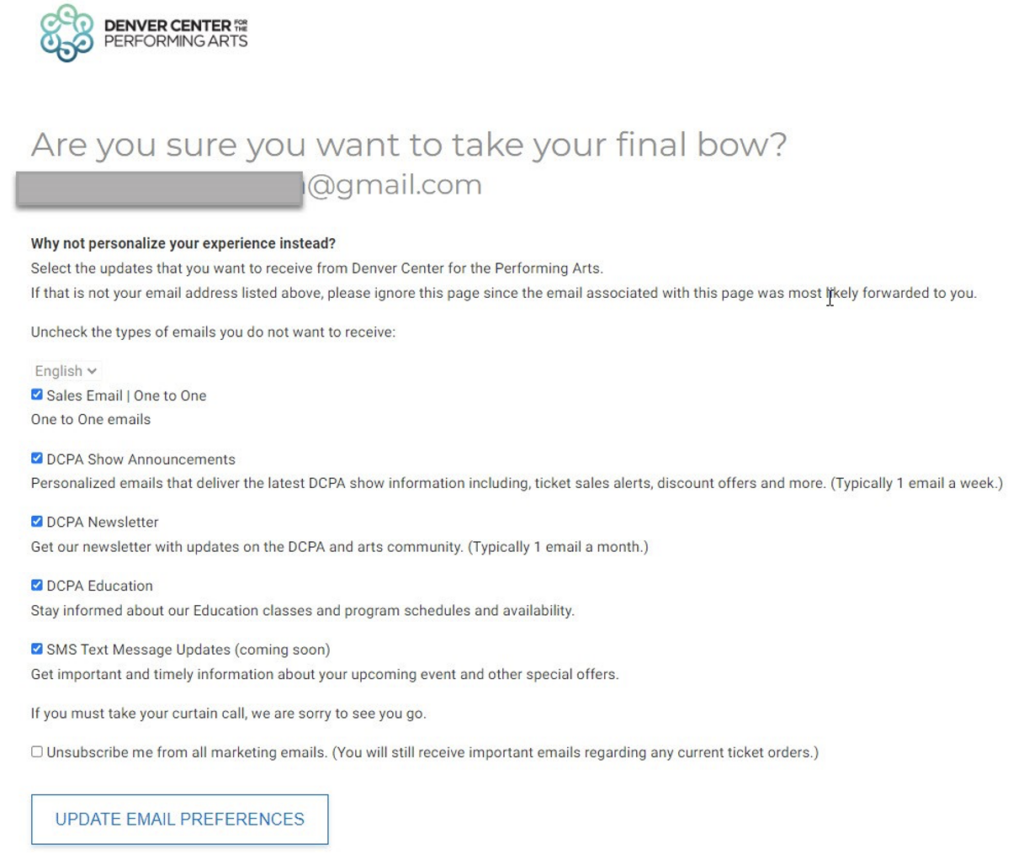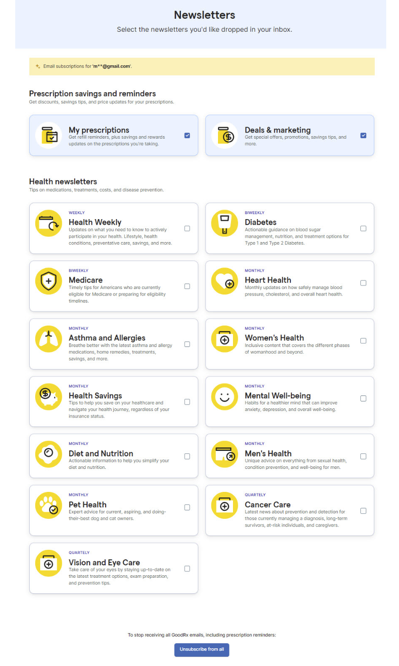
Every year, consumers are demanding more and more personalization from the marketing messages they receive. They don’t want to (and shouldn’t have to!) put in the extra effort to scroll through long emails and search your website for something that makes sense for them.
How can marketers deliver?
One way is to use dynamic content based on purchase and search history to send targeted product recommendations. However, that’s not always the most efficient way to get clicks and revenue, especially if the subscriber has already purchased that product or something similar.
What’s even better is letting them tell you what they want to receive. How? With a preference center!
We’ve introduced you to email preference centers and the importance of gathering and using zero-party data, but now it’s time to get more specific. Industry-specific, that is.
Marketers can’t take a one-size-fits-all approach to preference centers. The more effort you put in to create a preference center tailored to your unique audience, the better your consumer data will be.
It’s time to look beyond basic questions about cadences and birthdays, and find out what your audience truly cares about.
Why create an industry-specific preference center?
Optimized preference centers are extra important right now, for a few reasons.
As mentioned previously, AI-driven dynamic content is a very useful tool, but it isn’t perfect. Solid segmentation strategies still reign supreme, and having a thorough preference center can help supplement your AI tools to create thoughtful and targeted campaigns. Let your subscribers be the humans behind AI.
Additionally, every year email volume increases and it’s harder to win attention in the inbox. We just had another record-breaking Black Friday in terms of email send volume, and we expect this volume will continue to grow each year.
So, how can you stand out? By sending tailored emails that people want to see and by not spamming them with every single product you have to offer without regard to relevance.
Is it worth the effort?
Given the lift required, how can marketers decide if it’s worth it to create a new preference center?
Here are a few things to consider…
Revenue: Sending more targeted campaigns will drive revenue more than batch-and-blast uniform templates. Attention spans are getting shorter, lives are getting busier, and people want information quickly so they can move on to the next thing. A targeted email based on subscriber preferences puts their main interest as the focus of the email, reduces scroll time, and makes it easier to guide them to exactly what they want on the website.
Data: A more specific preference center can help develop targeted personas for your actual vs intended audience. This data can also connect with your social media and digital advertising efforts to help better target your actual audience.
Engagement: Preference centers don’t always get a lot of activity. So when subscribers take the time to tell you what they’re interested in, they are likely going to be your most engaged audience and bring in the highest revenue per email.
That said, if you do take the time to create a new, robust preference center, make sure you tell your audience and feature it in a campaign so they know to go and update their preferences. Otherwise, they might never notice the little link most senders hide in their email footers.
Examples of effective industry-specific preference centers
Godiva
Godiva’s preference center follows a simple rule: Keep it simple. They have the standard Email, Name, Birthday, and Zip code fields, but then have another section where they ask what types of products you’re interested in. Gift Boxes? Truffle Collections? Both? Let them know!
The preference center is still nice and short, but it accomplishes the task of getting some really specific information that can be used for sending targeted campaigns.

Denver Center for the Performing Arts
A Colorado staple, the Denver Center for the Performing Arts (DCPA) has a preference center that not only has options specific to their industry and offerings but also goes a step further and sets expectations for each category.
Normally if you sign up for a newsletter you don’t really know what that actually means. The DCPA gives you a description and tells you the expected cadence. They aren’t a retailer, but the show biz industry can still highlight specific interests that are relevant and resonate with their audience. Bonus points for the industry-specific language!

GoodRx
GoodRx has a preference center with a ton of options, as well as thorough descriptions for each one. With 13 newsletters to choose from, it’s important that they let you make your own choice and filter down to what is relevant. If you don’t have any pets, you’d likely be annoyed with the Pet Health newsletter. If you’re a man, the Women’s Health one might not interest you
You might not want any of them and prefer to just stick to your actual prescriptions and keep things simple. The key thing here is that they give you a choice. Someone might even discover a topic they didn’t realize there is a newsletter for and be excited to sign up for it.

Best practices to know
Now that we’ve identified what industry-specific preference centers look like and why they’re important, let’s discuss some best practices to keep in mind when building one.
Before building out your new preference center, make sure you identify your email program’s ability to segment and target based on your results. If you’re still designing in a very manual process with a limited design team, then getting too detailed may make it hard to use the data in an optimized way.
Identify your top goal with the new preference center and the data you’ll acquire from it. Then outline the types of questions you want to ask. A clothing retailer for example could have the following outline:
- Gender (Male/Female/Any)
- Age (Toddlers/Kids/Youth/Adults)
- Content (Sales/Clearance/New Products/Top Selling)
- Frequency (Daily/Weekly/Bi-weekly/Monthly/Only sales)
You can go even further and focus on more categories like pants/purses/jewelry/pajamas/etc., but things might get a bit unwieldy if you go too far. Plus, your subscribers might not have the patience for that many questions.
It’s time to get building!
With mailbox providers like Gmail and Yahoo cracking down on complaint rates, it’s more important than ever to send timely and relevant campaigns to your audience. A preference center that has questions specific to your industry and your offerings can help reduce complaint rates by sending targeted campaigns based on what your subscribers have told you they want to see.
Remember, if you collect this data you have to actually use it. If someone is only interested in a specific type of chocolate, then don’t send them emails about gummy worms. Keep things simple, targeted, and relevant.
For expert tips to put the data you collect from your souped-up preference center to good use, watch our on-demand webinar: “New Strategies to Pump Up Your Email Personalization.”